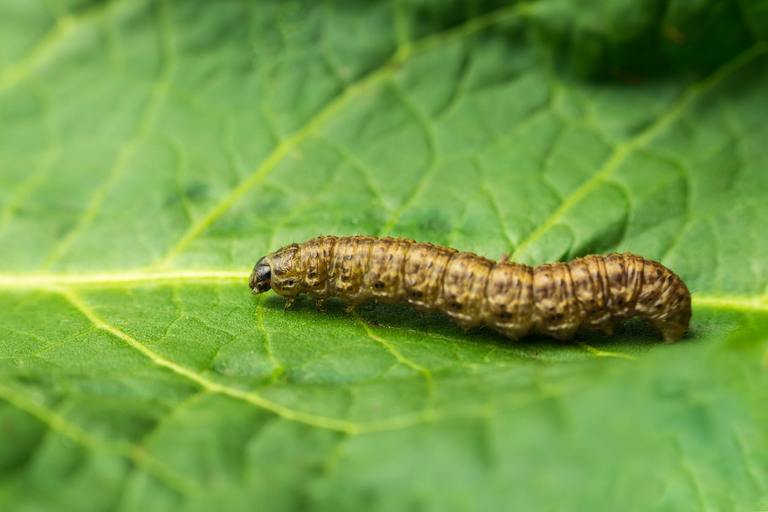Cut It Out! Stop Cutworms from Wrecking Your Garden This Bug Season
Published: April 23, 2025

Introduction
As bug season ramps up across Southwest Florida, homeowners and gardeners alike are seeing an increase in pest activity. One particularly destructive pest to watch for this time of year is the cutworm. These sneaky nocturnal caterpillars can cause serious damage to lawns, vegetable gardens, and ornamental plants. If you’ve noticed mysteriously severed seedlings or brown and bare patches in your yard, cutworms could be to blame.
At All U Need Pest Control, we understand how frustrating it can be to battle pests like cutworms. Here’s what you need to know about these destructive larvae, including how to identify them, protect your property, and how a steady, professional approach can make all the difference.
What Are Cutworms?
Cutworms are not actually worms; they’re the larval stage of several species of moths, commonly from the Noctuidae family. These larvae typically measure 1 to 2 inches in length and come in a range of colors, including gray, brown, green, and black. Most species are smooth and fat-bodied, curling up into a C-shape when disturbed.
The name "cutworm" comes from their feeding behavior. These pests feed at night, chewing through the stems of young plants at the soil surface—often cutting them down completely. One cutworm can destroy several plants in a single night.
Common Cutworm Species in Florida
In Florida, several cutworm species are particularly active during spring and summer. Some of the most prevalent include:
- Black cutworm (Agrotis ipsilon): This species is especially damaging to turfgrass and corn crops.
- Variegated cutworm (Peridroma saucia): Known to feed on over 200 plant species, including vegetables and ornamentals.
- Granulate cutworm (Feltia subterranea): Common in Florida gardens and agricultural fields.

These species become more active as temperatures rise, which is why spring and summer are peak seasons for damage.
Signs of a Cutworm Infestation
Identifying a cutworm infestation early is key to preventing extensive damage. Here are the most common signs:
- Young seedlings cut at the base
- Bare patches in lawns or missing vegetable starts
- Nocturnal activity (damage appears overnight)
- Presence of fat, curled caterpillars in the soil during the day
To confirm an infestation, you can dig around the base of affected plants or set up cardboard collars and traps to catch them in action.
How to Prevent Cutworm Damage
Keeping cutworms at bay involves a combination of cultural practices, physical barriers, and—in some cases—extra layers of protection that provide consistent, reliable results. Many homeowners find that a little DIY effort can go a long way, but when combined with ongoing pest monitoring and seasonal treatments, the benefits often multiply.
1. Start with Clean Soil
Remove plant debris and weeds from your garden and lawn before planting. These areas provide shelter and food sources for cutworm moths to lay their eggs. A clean start is your first defense.
2. Use Plant Collars
Create barriers around the base of young plants using toilet paper rolls, tin foil, or commercially available collars. These help reduce damage, especially in early growth stages when plants are most vulnerable.
3. Encourage Natural Predators
Birds, ground beetles, and parasitic wasps are all natural predators of cutworms. Planting native flowers and avoiding broad-spectrum pesticides can help encourage these beneficial allies.
4. Till the Soil
Tilling in early spring and fall can expose and kill cutworm pupae hiding in the soil, helping to break their life cycle before they get a chance to cause damage.
While these methods are helpful, they’re most effective when part of a bigger-picture approach. For those who want lasting peace of mind throughout bug season, pairing prevention with professional oversight ensures nothing slips through the cracks.
When to Consider Professional Backup
Sometimes, even the most proactive gardeners can’t keep cutworms at bay. If you’re seeing consistent damage or large areas of affected plants, it may be a sign that deeper, ongoing support is needed.
That's where steady, season-long strategies come in. Homes and landscapes benefit greatly from regular inspections and long-term protective treatments that help stay ahead of pest activity.
At All U Need Pest Control, we provide targeted treatment plans tailored to your lawn and garden’s specific needs. Our team uses integrated pest management (IPM) principles to reduce pests while preserving the health of your environment.

Why Cutworms Matter to More Than Just Gardeners
Cutworms aren’t just a nuisance in home gardens. These pests are also a significant problem in agriculture. According to research from North Carolina State University, cutworms can cause economic losses in corn, tobacco, and other staple crops. Their ability to rapidly destroy young seedlings makes early detection and control a critical priority.
In urban landscapes, they can ruin entire lawns overnight. For homeowners who take pride in their outdoor space, cutworms can quickly become a costly and frustrating problem.
Bug Season Is Here: Be Proactive!
Spring in Southwest Florida is a beautiful time—but it also marks the arrival of peak pest season. As temperatures climb, insects like cutworms emerge in full force, ready to feast on your landscape.
Now is the time to inspect your lawn and garden for signs of pest activity. Spotting early signs can go a long way, especially when paired with consistent protection.
Partner with All U Need Pest Control
At All U Need Pest Control, we don’t just treat pests—we help you prevent them. Our technicians are trained to identify early signs of infestation, apply safe and effective treatments, and offer advice on keeping your yard healthy all season long.
So whether you're dealing with cutworms or just want confidence that your lawn and garden are protected from what's coming this season, we’re here with practical solutions that last.
Don’t let cutworms cut your season short. Contact All U Need Pest Control today and protect your property from the ground up.